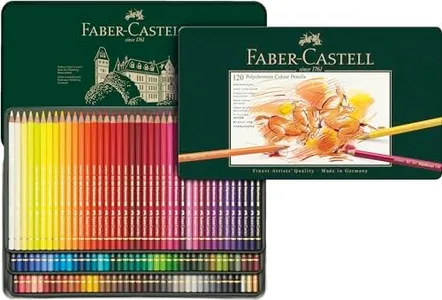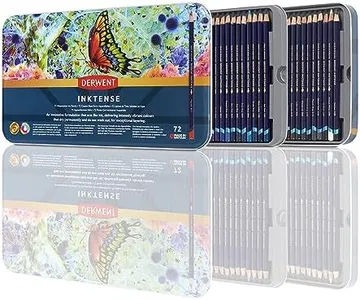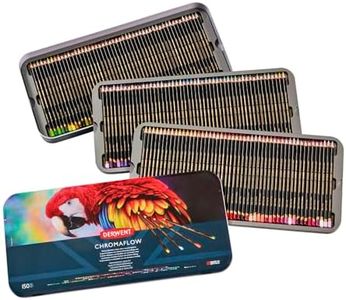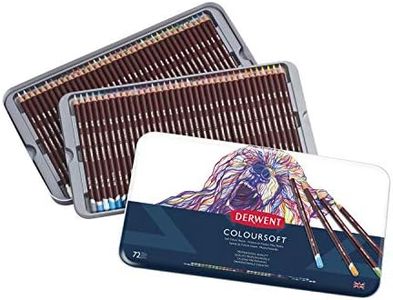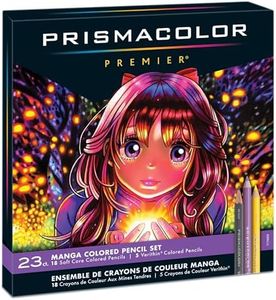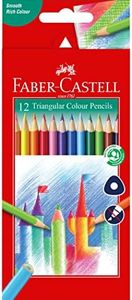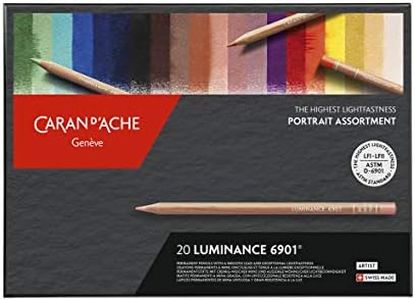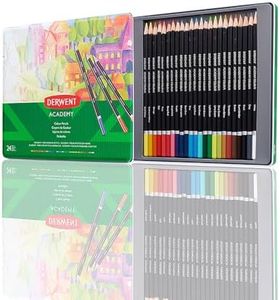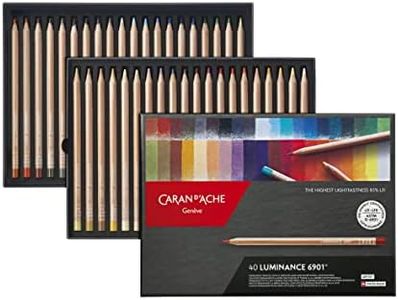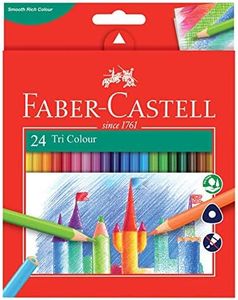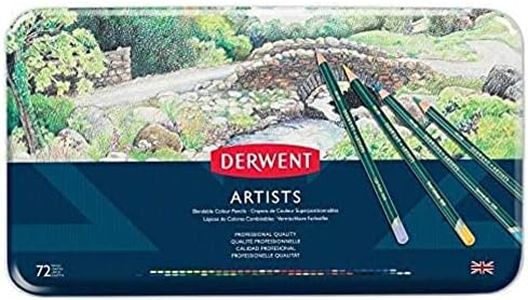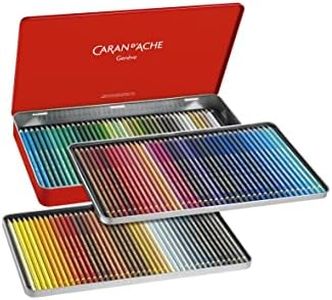We Use CookiesWe use cookies to enhance the security, performance,
functionality and for analytical and promotional activities. By continuing to browse this site you
are agreeing to our privacy policy
10 Best Drawing Pencils
From leading brands and best sellers available on the web.Buying Guide for the Best Drawing Pencils
Choosing the right drawing pencils can be a game-changer for both beginners and experienced artists. The right pencil allows you to create the effects you want, whether it's light sketching, precise detailing, or dramatic shading. It's important to understand what features set pencils apart so you can select those that best match your drawing style and needs.Hardness Grade (Graphite Scale)The hardness grade refers to how hard or soft the pencil lead is, typically labeled from 9H (hardest) to 9B (softest), with HB in the middle. Hard pencils (H range) produce lighter, finer lines and are great for technical or detailed work, while soft pencils (B range) create darker, bolder marks ideal for shading and expressive lines. If you like sketching fine details or doing delicate outlines, harder pencils are more suitable. If your focus is on shading, creative textures, or bold artwork, softer pencils are the way to go. Most artists benefit from owning a range from hard to soft to cover all drawing needs.
Pencil Type (Wooden, Mechanical, Clutch)Drawing pencils come in traditional wooden barrels, mechanical pencils with refillable leads, and clutch pencils that hold a thicker, single piece of lead. Wooden pencils are classic for their comfort and control over pencil pressure, mechanical pencils offer consistent fine lines with no need for sharpening, and clutch pencils are versatile, letting you manually shorten the lead for broad strokes or fine points. If you prefer a familiar feel and classic sharpening, go wooden. For precision and convenience, consider mechanical or clutch options.
Lead DiameterThe thickness of the pencil lead affects the width and boldness of your lines, with common sizes ranging from 0.3 mm to 2 mm and above. Thin leads (0.3–0.5 mm) are perfect for detailed and technical work, while thicker leads (2 mm and higher) allow for broad, bold strokes and more robust shading. If you tend to focus on intricate details or fine sketches, go for a thinner lead. For expressive drawing, shading, or creating art on a larger scale, a thicker lead is often better.
ErasabilityErasability refers to how easily marks made by a pencil can be erased without damaging the paper. Softer pencils (B grades) can sometimes smudge and be harder to fully erase, while harder pencils (H grades) tend to leave cleaner, more easily erasable marks. If you plan to correct mistakes often or want clean, crisp sketches, consider pencils known for good erasability, usually on the harder side.
Break ResistanceBreak resistance is how well the pencil lead withstands pressure or accidental drops without breaking. Softer leads (higher B grades) are more prone to breaking, especially when sharpened to a fine point, while harder leads and high-quality pencils are less likely to snap. If you're heavy-handed or carry your pencils on the go, look for pencils marketed as having break-resistant leads.
Pencil Material and Eco-FriendlinessThe material of the pencil body, often wood or recycled materials, can affect both feel and environmental impact. Some pencils use sustainably sourced wood or are made from recycled paper. If you care about eco-friendliness, look for certifications or recycled content in your pencils; otherwise, choose what feels comfortable in your hand for long drawing sessions.
